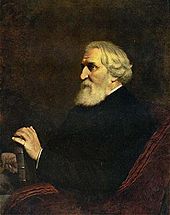Bezhin Meadow
Bezhin Meadow , Bezhin lug is a 1937 Soviet film famous for having been suppressed and believed destroyed before its completion. Directed by Sergei Eisenstein, it tells the story of a young farm boy whose father attempts to betray the government for political reasons by sabotaging the years harvest and the sons efforts to stop his own father to protect the Soviet state, culminating in the boys murder and a social uprising. The film draws its title from a story by Ivan Turgenev, but is based on the life of Pavlik Morozov, a young Russian boy who became a political martyr following his death in 1932, after he denounced his father to Soviet government authorities and subsequently died at the hands of his family. Pavlik Morozov was immortalized in school programs, poetry, music, and in film.
Because Bezhin Meadow was repeatedly edited, reshot, and changed to satisfy the Soviet government authorities, several versions of the film were created.The most sourced and bestknown version focuses on Stepok, a young boy in a collective farming village, who is a member of the local Young Pioneers Communist organization, as are other local children. His father Samokhin, a farmer, plans to sabotage the village harvest for political reasons by burning down the titular meadow, but Stepok organizes the other Young Pioneer children to guard the crops. Samokhin grows progressively more frustrated by his sons actions and success. Eventually, Stepok reports Samokhins crimes to the Soviet government authorities, and is in turn slain by his own father for betraying his family. The other Young Pioneers break into the local church, singing songs, and desecrate it in response to Stepoks death. The visuals of the film shift during the destruction of the church, with the villagers becoming that which they are destroyingthe angry villagers, by the end of the set piece, are depicted as Christlike, angelic, and prophetic figures. ........
Source: Wikipedia


